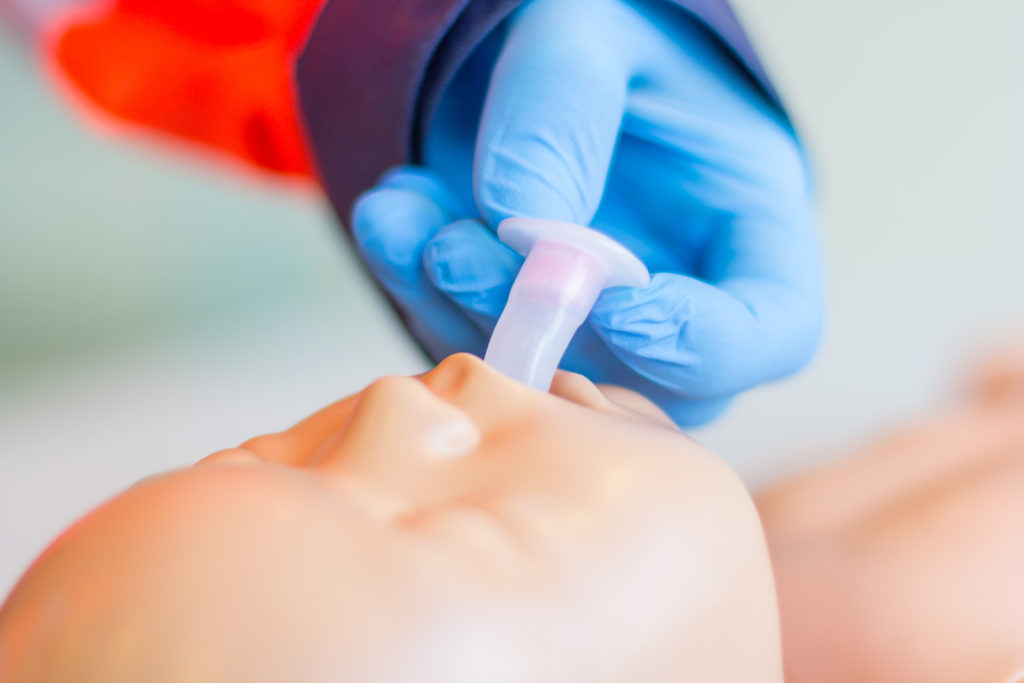Basic airway management is a vital skill and consists of maintaining a clear and healthy airway. Should the airway become blocked, a patient’s life will cease after roughly eight minutes. Therefore it is one of the most essential parts of any assessment.
The airway
The airway is one of the main parts of the respiratory system. It transports oxygen to the lungs when we breathe in, and transports carbon dioxide out of the lungs when we breathe out. Oxygen is essential for keeping us alive, as it allows the most important metabolic pathway to take place – aerobic respiration. In low concentrations, carbon dioxide is not harmful. In fact, it actually helps to stimulate your body to automatically breathe. However, when found in large concentrations in the blood, it makes the blood more acidic. This can cause acidosis, which can cause death in the most serious cases.
Basic Airway Management
The first thing you should do is make sure that the head is in line and the airway is clear. Then place one hand onto the bottom of the jaw and the other onto the forehead, roll the head back so it opens the airway. This tightens up the tongue, removing it from the back of the throat making the airway visible. The next thing to do is to look inside the airway to see if we can see any foreign objects or liquids that need to be removed. If there is an object at the back of the throat which you can see, carefully reach into their mouth and remove it. It is ideal to wear gloves in this situation, but it is more important to clear the airway so make that your number one priority! If there was any liquid or fluid remaining in the airway, you would then use suction or postural drainage. Postural drainage constitutes putting the patient into the recovery position or turning them onto their side to allow the tongue to fall forward and fluids and liquids to drain. Suction, however, requires the use of a suction aid, whether it be an automatic or manual suction unit.
Jaw Thrust – Alternate Method
This could be either a single or a dual person operation. If a patient on the floor has suspected spinal injuries, you should not tilt the head back further. If you did, the neck and spine may become damaged, or you may further their injuries. So you have to get down to the patient’s level by lying on the floor next to them. Push the jaw forward and gently open their mouth. Insert the top two fingers into the arch of the jaw and push forward. This lifts the jaw forward, allowing the tongue to be clear from the back of the airway. This should work quite nicely to clear the airway itself from tongue obstruction. These are the two most common used airway clearance methods. Once the airway has been cleared, you then look, listen and feel for no more than 10 seconds. You are checking that breathing is actually taking place. Breathing needs to be a regular rhythm between 12 and 20 breaths per minute.
For more information on training courses, visit our “Courses” page which also includes our First Responder and First Person on Scene (FPOS) Courses.

